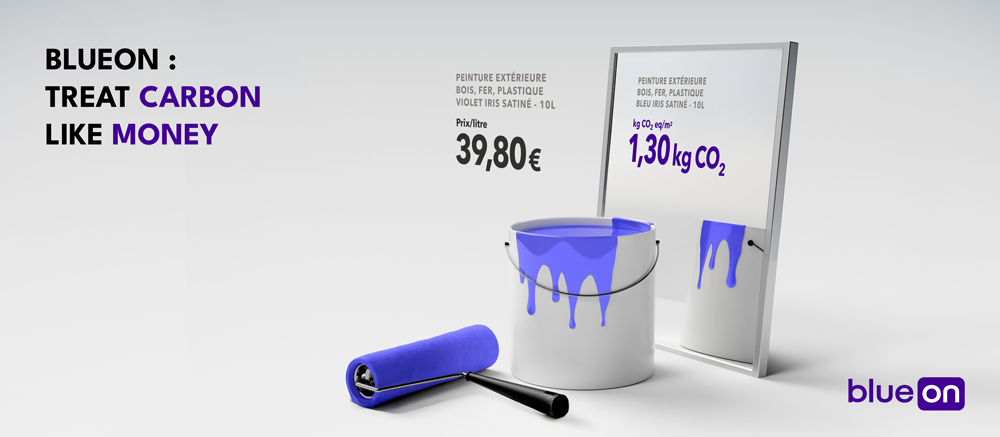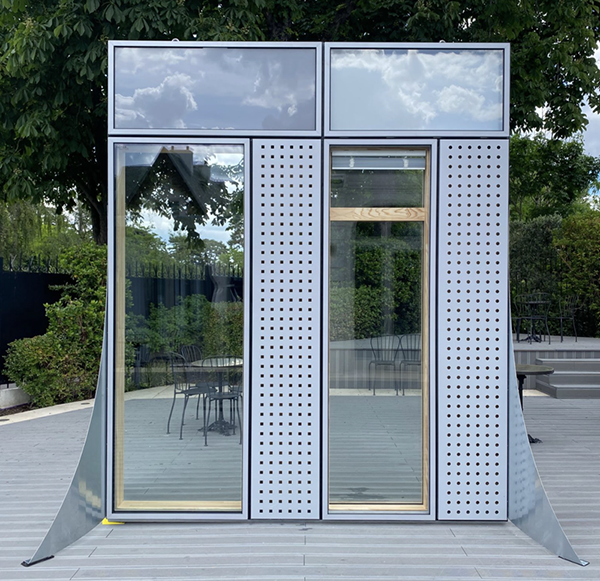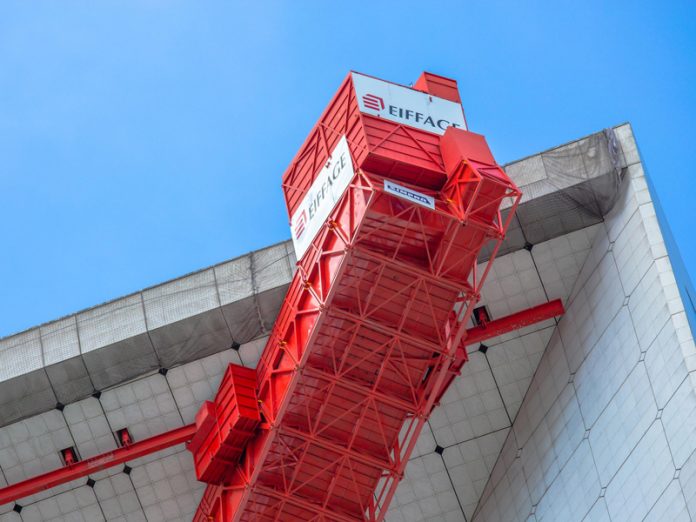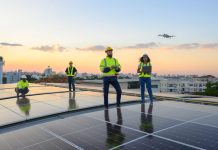By Hervé Legenvre and Bertrand Touzet
Introduction
This article explores the role of platforms and circularity strategies in mitigating climate change generated by the construction industry. It describes how the integration of procurement processes, platform technologies, and circular economy principles fosters decarbonization. We first discuss the construction industry’s impact on climate change, then explore specific strategies developed by Eiffage, a construction company. Throughout the article, we illustrate how these initiatives are being implemented to drive widespread adoption of low-carbon solutions across the sector.
The role of the construction industry in combating climate change
In recent times, climate change isn’t the only environmental issue within the construction industry. Other significant challenges include managing water use, reducing waste, and securing access to essential raw materials. These are all areas where the industry must make improvements.
The construction industry contributes significantly to climate change. According to the United Nations Environmental Programme, it accounts for 21 per cent of global greenhouse gas (GHG) emissions. In 2022, buildings were responsible for 34 per cent of global energy consumption and 37 per cent of process-related carbon dioxide emissions. The production of construction materials such as cement, steel, and concrete is notably emission-intensive. According to the European Union, the construction sector is responsible for approximately 50 per cent of all extracted materials and contributes to over 35 per cent of the EU’s total waste generation. Additionally, buildings consume considerable energy for heating, ventilation, air conditioning, and lighting.
Achieving sustainable construction promises to enhance quality of life by fostering healthier, more durable, and more energy-efficient living environments. As governments increasingly implement sustainable building regulations and standards to promote environmentally friendly practices, the construction sector faces significant challenges. Despite its vital social and economic importance, the industry is sensitive to costs, and efforts to reduce emissions are likely to lead to higher prices. This sector not only significantly bolsters the economy through job creation but also profoundly influences social outcomes. And, beyond climate change, the construction industry confronts other pressing environmental challenges. Critical among these are managing water use, minimizing waste, and ensuring access to essential raw materials. Addressing these issues is crucial for the industry’s continued improvement and sustainability.
Battling climate change: the Eiffage strategy
Eiffage is one of Europe’s leading construction companies, renowned for its expertise in civil engineering, construction, and infrastructure projects. The company is also engaged in energy systems and operates various public-private-partnership projects. Eiffage is committed to sustainable development and actively implements strategies to reduce its environmental impact across its diverse range of services and projects.
Eiffage’s GHG emission-reduction strategy aims to reduce its own emissions while providing clients with more environmentally friendly products and services. In line with the Task Force on Climate-Related Financial Disclosures (TCFD) guidelines, Eiffage has published a climate report that supports the 1.5°C target established by the 2015 Paris Agreement. Eiffage annually tracks and reports its greenhouse gas emissions to the Carbon Disclosure Project (CDP). And the company has set ambitious targets in accordance with the Science Based Targets initiative: by 2030, Eiffage aims to reduce its Scope 1 and 2 emissions by 46 per cent and its upstream and downstream Scope 3 emissions by 30 per cent. Consequently, Eiffage encourages its employees, suppliers, and partners to engage in emission-reduction initiatives. This includes initiating innovation projects, experimenting with innovative technologies, and sharing best practices.
Key challenges for decarbonizing the construction industry
Reducing emissions in the construction industry presents significant challenges due to its inherent complexity and long lifecycle, which slow down the pace of change. Since buildings are designed to last for decades, if not centuries, changes in the construction sector have a long-term impact on GHG emissions. The emissions produced during construction can affect the environment for an extended period after completion. Moreover, decisions during the construction phase can influence a building’s energy consumption throughout its lifecycle, impacting emissions during the use phase.
For effective emission reduction, the industry must improve building designs, adopt new technologies and operational practices, and develop materials that emit less.
However, innovation in these areas can be slow and costly, despite the availability of more and more low-emission options. Many materials marketed as “recycled” or “low-carbon” offer only modest reductions in GHG emissions. The performance and durability of these alternatives are often questioned, which limits their adoption. The absence of standardized definitions for low-carbon products by governments or regulatory bodies further complicates reliable and comparable life-cycle assessments, making the selection of effective solutions challenging.
Moreover, the construction sector’s diversity, ranging from minor renovations to large-scale infrastructure projects, means that the implementation of uniform changes is more complex. The uniqueness of each building, for example, complicates material reuse efforts.
Construction projects also involve a complex network of stakeholders, including architects, project management services, construction companies, and contractors. Unless ambitious decarbonization goals are set by clients from the start, significant emission reductions are difficult to achieve. Early decisions by architects and project management services heavily influence the emissions of a building.
The proliferation of so-called “low-carbon” solutions, the diversity of projects, and the complexity of stakeholder relationships act as centripetal forces (see table 1). These forces pull in various directions, complicating the coordination of actions or the adoption of unified emission reduction strategies.

To address these challenges, there is a pressing need to realign all industry players around common goals, practices, and standards. This involves reinventing supply chains and fostering collaboration across the entire value chain, including multiple suppliers, to drive innovation. Only through such coordinated efforts can the construction industry overcome its fragmented nature and make substantial strides in reducing its environmental impact.
Eiffage marketplace strategy
To align all industry players around common goals, practices, and standards, the digitalization of procurement processes is instrumental. This can facilitate distributed decision-making, allowing each construction project to make informed purchase decisions based on a shared data foundation and robust procurement processes. This involves transforming complex environmental product declarations that contain information on GHG emissions into accessible and actionable data, empowering employees on construction sites to make the right decisions.
Addressing the decarbonization challenges in the construction sector can be achieved through a data-driven strategy. Data from various sources can be aggregated and synthesized to provide clear accountability and support informed decision-making. Eiffage has led the development of a unified marketplace that integrates various types of data. This marketplace, named BlueOn (https://blueon.io/), while initiated by Eiffage, is accessible to everyone in the industry as a standalone platform and brand.
BlueOn aims to democratize access to environmental data by providing reliable information that enables buyers to make informed comparisons and automatically generate carbon reports. Serving as a commercial marketplace, BlueOn features products alongside their environmental data, offering comprehensive environmental, technical, and economic insights for any products that suppliers choose to make available in the marketplace. A key requirement for including a product in the marketplace is that its environmental impact, particularly GHG emissions, must be assessed through a life-cycle analysis specific to that product.

For suppliers, BlueOn presents an opportunity to showcase their environmental performance and investments, enhancing product visibility and potentially creating a new sales channel. While Eiffage does not mandate its suppliers to join BlueOn, it strongly encourages participation in this initiative. The primary objective is transformative, to motivate suppliers to produce reliable environmental data at the product level, which can be publicly shared through digital means. Such initiatives amplify the momentum toward creating publicly accessible product carbon footprints across the industry.
Although some suppliers may initially hesitate, the commitment to transmitting unaltered data often alleviates their concerns. Additionally, industry mimicry plays a crucial role; when one supplier commits to sharing their product and information in the marketplace, others are likely to follow. This peer influence can significantly accelerate the industry’s transition. While no supplier has refused to participate thus far, engagement levels do vary, and peer pressure frequently serves as a powerful motivator.
The success of BlueOn hinges on several factors: starting with a blank page of paper to focus on core needs, prioritizing accurate carbon footprint data derived from lifecycle analysis, and ensuring user-friendly design. Simple, intuitive interfaces have attracted internal users without formal mandates, proving that ease of use can drive adoption.
Although the platform was originally intended for internal use by Eiffage, there is now an intention to open it up to major clients, particularly those involved in internal renovations. Subcontractors and smaller construction firms also stand to benefit from the marketplace as future users. The integration and aggregation of supplier data without alteration is complex but essential for maintaining data integrity. But strong leadership and a focus on essential features have been pivotal in navigating these challenges.
In conclusion, as BlueOn continues to evolve and expand, its role in transforming the construction industry will become increasingly vital. By fostering collaboration and transparency, digitalization and decarbonization, BlueOn is setting new standards for environmental accountability and enabling a more sustainable future. This forward-thinking approach not only aligns with global sustainability goals but also paves the way for other industries to follow suit in their environmental endeavours.
BlueOn as a marketplace operates within an ecosystem logic, acting as a hub that connects a broad and evolving network of providers and users supported by multiple data streams. This platform is just one part of Eiffage’s broader strategy to facilitate the decarbonization of the construction industry. Alongside BlueOn, Eiffage is developing new supply chains that bring together complementary capabilities to deliver solutions with a lower carbon footprint. These initiatives are designed to harness the collective strengths of various stakeholders, fostering an environment where sustainable practices are not just encouraged but integral to the industry’s evolution.

Reinventing the raw material foundations of the construction industry
The construction sector relies heavily on carbon-intensive materials such as cement and steel. To advance decarbonization, alternative materials like fly ash, slag, calcined clay, and recycled concrete are being utilized, which can partially replace traditional cement and reduce new production demand.
The adoption of environmentally friendly concrete offers a smaller carbon footprint, since the inclusion of industrial by-products can lessen the environmental impact of construction projects. However, concrete with a lower carbon footprint can take two to four days to set, depending on the weather, which may delay project progress and jeopardize performance. To address this, Eiffage has collaborated with two suppliers to develop a new system that insulates formworks and facilitates the thermo-reactive process of the concrete, enabling it to set much faster. The setting time was successfully reduced to 11-12 hours at a temperature of 40°C, thus preserving the project schedule. This collaborative innovation not only maintained the project timeline but also achieved a 30 per cent reduction in carbon emissions and a 15 per cent improvement in energy efficiency.
Eiffage is also using wood as a sustainable alternative due to its carbon sequestration benefits, which significantly lower emissions. Wood absorbs and stores carbon during its growth phase, reducing the overall carbon footprint of projects. Although wooden structures have a lighter environmental impact compared to cement, their use is limited in certain types of construction, and their sustainability depends on responsible forestry practices. Eiffage ensures material traceability through audits by Product DNA, which verifies material origins and authenticates them on a blockchain, providing transparent information along the wood-to-construction supply chain.
Additionally, Eiffage is innovating with the use of prefabricated modules. These modules are manufactured in a factory and then transported to the construction site. For instance, the company has established a business entity called HVA that designs and produces modular bathrooms made of wood. These modules are prefabricated in a controlled factory environment and arrive at the construction site ready to be integrated into the building. The extensive use of wood for some of these modules significantly reduces emissions at construction sites. From a cost perspective, such a solution can be advantageous when considering the increase in quality. Instead of being constructed on-site, a bathroom is pre-assembled as a module in a factory, which reduces the risk of quality issues and the need for rework.
Towards circularity
Eiffage is dedicated to advancing a circular economy, emphasizing eco-design and efficient resource use. The company’s strategy includes designing products that require fewer new materials and enhance the use of recycled content, focusing on modular designs that facilitate disassembly and reuse.
Through its subsidiary Demcy, Eiffage has developed expertise in selective deconstruction, helping clients exceed the law’s 70 per cent recycling target, with 97 per cent of materials from demolition sites being recycled or recovered. This success is achieved through new methods and worker training for systematic selective removal of equipment and materials, supported by resource diagnostics to identify and inventory recoverable items. Some suppliers also repair or remanufacture components such as emergency exit blocks, demonstrating a practical approach to extending material lifecycles.
Goyer, another Eiffage subsidiary, has introduced FairFaçade, a new façade concept that significantly reduces carbon footprint using a wood / aluminium curtain wall system, lowering emissions by 45-70 per cent compared to traditional aluminium structures. This modular system offers high repairability and thermal performance while utilizing low-carbon glass and recycled aluminium. FairFaçade is a great example of Eiffage’s circular economy initiative’s readiness for mass production
Looking into the future, a platform strategy is necessary to scale the circular economy in the construction industry. Some digital platforms have emerged to provide a second life for materials and equipment. However, these platforms often struggle to operate at the necessary scale for significant impact, handling relatively small volumes. To truly transform the industry, a systematic approach involving larger-scale remanufactured and reconditioned equipment is crucial. Collaboration with suppliers to integrate circular principles into product design, along with practical, scalable strategies, can enhance reuse and recycling processes. A robust, industry-wide commitment is needed to make these practices fundamental shifts in resource management.
Effective collaboration across multiple actors and supportive public policies are essential for sustainable building resource management. While detailed information about materials and resources exists during construction or renovation, it often isn’t maintained or updated afterwards. By implementing public policies that mandate property owners to preserve and regularly update this data and encouraging collaboration between architects, builders, and regulators, a more transparent and efficient resource management system can be established. This integrated approach can lead to significant advancements in sustainability within the construction industry.
Conclusion
Decarbonizing the construction industry is critical for climate action. The industry must tackle challenges such as material efficiency and waste reduction while integrating sustainable building practices to lower carbon footprints. Eiffage is at the forefront, leveraging procurement, platforms, and circularity to reduce carbon emissions. The company has embraced a procurement strategy that embraces digitalization to enable better decision-making based on robust environmental data, promoting the use of materials with verified low emissions. Platforms like BlueOn developed by Eiffage extend these capabilities industry-wide, offering access to data for environmentally friendly products and fostering an ecosystem of collaboration among suppliers and contractors. This approach not only streamlines the adoption of sustainable practices but also propels the industry towards significant emission reduction by ensuring that all stakeholders align with shared decarbonization goals. Circular strategies further enhance sustainability by prioritizing the reuse and recycling of materials, supported by innovations in product design and supply chain management. Collectively, these strategies embody a holistic approach to environmental responsibility in construction, aiming to transform industry standards and achieve a sustainable future.
About the Authors

Hervé Legenvre is a Professor and Research Director at EIPM. He manages educational programmes for global clients. He conducts research and teaches on digitalization, innovation, and supply chain. Recently, Hervé has conducted extensive research on how open-source software and open hardware are transforming industry foundations. Hervé is part of the project advisory committee and also of the Independent Committee for the Socioeconomic Studies (www.eipm.org).






































